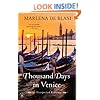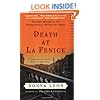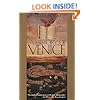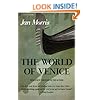



The City of Falling Angels Paperback – September 26, 2006
| Amazon Price | New from | Used from |
|
Mass Market Paperback
"Please retry"
|
—
|
— | $0.01 |
|
Audio CD, Audiobook, Unabridged
"Please retry"
|
—
|
$21.07 | $3.24 |
|
Unknown Binding
"Please retry"
|
—
|
$4.94 | $3.69 |

Don't have a Kindle? Get your Kindle here, or download a FREE Kindle Reading App.
Want to know our Editors' picks for the best books of the month? Browse Best Books of the Month, featuring our favorite new books in more than a dozen categories.
Product Details
Would you like to update product info or give feedback on images?.
|
Editorial Reviews
Amazon.com Review
Past Midnight: John Berendt on the Mysteries of Venice
 Just as John Berendt's first book, Midnight in the Garden of Good and Evil, was settling into its remarkable four-year run on The New York Times bestseller list, he discovered a new city whose local mysteries and traditions were more than a match for Savannah, whose hothouse eccentricities he had celebrated in the first book. The new city was Venice, and he spent much of the last decade wandering through its canals and palazzos, seeking to understand a place that any native will tell you is easy to visit but hard to know. For travelers to Venice, whether by armchair or vaporetto, he has selected his 10 (actually 11) Books to Read on Venice. And he took the time to answer a few of our questions about his charming new book, The City of Falling Angels:
Just as John Berendt's first book, Midnight in the Garden of Good and Evil, was settling into its remarkable four-year run on The New York Times bestseller list, he discovered a new city whose local mysteries and traditions were more than a match for Savannah, whose hothouse eccentricities he had celebrated in the first book. The new city was Venice, and he spent much of the last decade wandering through its canals and palazzos, seeking to understand a place that any native will tell you is easy to visit but hard to know. For travelers to Venice, whether by armchair or vaporetto, he has selected his 10 (actually 11) Books to Read on Venice. And he took the time to answer a few of our questions about his charming new book, The City of Falling Angels:
Amazon.com: The lush, cloistered southern city of Savannah was the locale of Midnight in the Garden of Good and Evil. Venice, the setting for The City of Falling Angels, is vastly different. Was it the difference itself that drew you to Venice?
John Berendt: Savannah and Venice actually have quite a lot in common. Both are uniquely beautiful. Both are isolated geographically, culturally, and emotionally from the world outside. Venice sits in the middle of a lagoon; Savannah is surrounded by marshes, piney woods, and the ocean. Venetians think of themselves as Venetian first, Italian second; Savannahians rarely even venture forth as far as Atlanta or Charleston. So both cities offer a writer a rich context in which to set a story, and the stories provide readers a means of escape from their own environment into another world.
Amazon.com: I enjoyed your rather declarative author's note: that this is a work of nonfiction, and that you used everyone's real names. In your previous book you did use pseudonyms for some characters and you explained that you took a few small liberties in the service of the larger truth of the story. Why the change this time?
Berendt: When I wrote Midnight I thought I would do a few people the favor of changing their names for the sake of privacy. But when the book came out, several of the pseudonymous characters told me they wished I'd used their real names instead. So this time, no pseudonyms. As for the storytelling liberties I took in writing Midnight, they were minor and did not change the story, but my mention of it in the author's note caused some confusion, with the result that Midnight is sometimes referred to now as a novel, which it most certainly is not. Neither is The City of Falling Angels. In fact, I dispensed with the liberties this time and made it as close to the truth as I could get it.
Amazon.com: In The City of Falling Angels, a number of fascinating people serve as guides to the city, each with a different idea of the true nature of Venice. Who was your favorite?
Berendt: I don't have a favorite, but Count Girolamo Marcello is certainly a memorable, highly quotable commentator. "Everyone in Venice is acting," he told me. "Everyone plays a role, and the role changes. The key to understanding Venetians is rhythm, the rhythm of the lagoon, the water, the tides, the waves. It's like breathing. High water, high pressure: tense. Low water, low pressure: relaxed. The tide changes every six hours."
I nodded that I understood.
"How do you see a bridge?" he went on.
"Pardon me?" I asked, "A bridge?"
"Do you see a bridge as an obstacle--as just another set of steps to climb to get from one side of a canal to the other? We Venetians do not see bridges as obstacles. To us, bridges are transitions. We go over them very slowly. They are part of the rhythm. They are the links between two parts of a theater, like changes in scenery. Our role changes as we go over bridges. We cross from one reality ... to another reality. From one street ... to another street. From one setting ... to another setting."
Once I had absorbed that notion, Count Marcello continued: "Sunlight on a canal is reflected up through a window onto the ceiling, then from the ceiling onto a vase, and from the vase onto a glass. Which is the real sunlight? Which is the real reflection? What is true? What is not true? The answer is not so simple, because the truth can change. I can change. You can change. That is the Venice effect."
I was not terribly surprised when he later told me, "Venetians never tell the truth. We mean precisely the opposite of what we say."
Amazon.com: Now that you know Venice well enough to be a guide yourself, what would you say to a visitor looking for insight into the character of the city?
Berendt: Tourists generally shuffle along, on narrow streets so crowded as to be nearly impassable, between the major sights of St. Mark's Square, the Rialto Bridge, and the Accademia Museum. All you have to do is to step off these heavily traveled alleyways, and in a few moments you will find yourself in quiet, much emptier surroundings. This is more like the real Venice. Another thing to do is to go into the wine bars where Venetians stand around drinking and talking. They will very likely be speaking the Venetian dialect, so you won't be able to understand them, but you will get a sampling of the true Venetian ambiance enlivened by the pronounced sing-song rhythm of the language. I'd also suggest stopping someone in the street and asking for directions. Almost invariably, you will be rewarded with a genial smile and the instructions, Sempre diritto, meaning "Straight ahead." This will only leave you more confused, because when you attempt to follow a straight line, you will be confronted by more twists and turns and forks in the road than you thought possible, given the instructions. This is part of what Count Marcello described as "the Venice effect."
--This text refers to an out of print or unavailable edition of this title.From Publishers Weekly
Copyright © Reed Business Information, a division of Reed Elsevier Inc. All rights reserved. --This text refers to an out of print or unavailable edition of this title.
More About the Author
Customer Reviews
Most Helpful Customer Reviews
Berendt has released his second book, The City of the Falling Angels and it reminds me a lot of Midnight. First is the location. While I have to admit Savannah and Venice aren't alike, they do both ooze atmosphere. Savannah, quaint but somewhat isolated is so different from the ancient and worldly city of Venice that it seems hard to understand their connection. You'll have to read the book first, but I think you'll see why Berendt selected Venice.
Secondly, Berendt manages to find some really interesting locals to put in the book: Olga, the former mistress of Ezra Pound, an artisan glass blower, the Rat-Man, and pigeon exterminators, et al. These provide the color that was such an interesting part of Midnight.
Finally, the loss of the Fenice Opera House and the subsequent trial of the arsonists gives the book an anchor similar to the murder trial in Midnight.
Berendt is a consumate story teller. His prose is like boating on a calm canal.
Whether The City of Falling Angels can come close to achieving the status and success of Midnight remains to be seen. As for me I found The City of Falling Angels and terrific read.
Just the way Venice is so unlike any other place -- a tiny, canal-filled, floating museum of a city that once was actually a world power -- I learned that its inhabitants, perhaps inevitably, are equally unlike those of any other place.
Nowhere but in Venice could I find Massimo Donadon, a "chef" who cornered a whopping 30% of the world's rat poison market by studying different countries' food preferences -- and then making his rat poison taste like those foods, since that's what local rats grow to like after they eat a place's garbage. (Butter for France, pork fat for Germany, curry for India.) And apparently no one but Berendt ever discovered the entertaining, carnivalistic characters like him (and many, many others) -- even though several literary giants, such as Henry James, Thomas Mann, and Ernest Hemingway had their chances.
And there's virtually nothing in "Angels" that you can find in any book of its kind. Or any book, period.
"Angels also has its "serious" side. It meticulously investigates the 1996 fire (accident or arson?) of one of history's most renowned opera houses. And while doing this, it gives us a basic cultural and political portrait of probably the world's most unusual city.
It's obviously tempting to compare "Angels" to "Midnight" -- since it's also about a city, and "Midnight" was such a record-breaking hit.Read more ›











